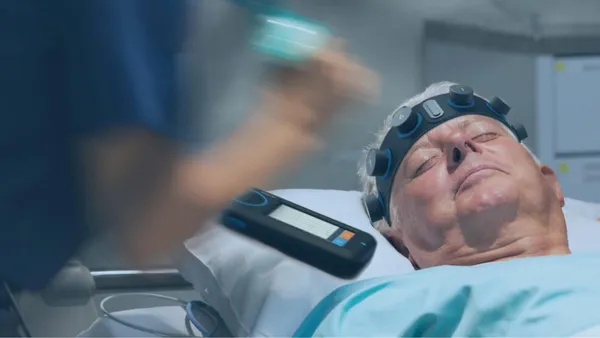Q4 Insights:
GE HealthCare, reporting earnings for its last time as a subsidiary of General Electric, posted an 8% gain in revenue in the fourth quarter as markets began to recover from COVID-19 for the company’s medical devices and the services they provide.
Revenue climbed from 6% to 11% across its ultrasound, patient care solutions and imaging units, while pharmaceutical diagnostics recorded a 5% drop in sales.
Shares of GE HealthCare rose 4.9%, or $3.46, to $73.54 in early trading today on the Nasdaq.
“Robust end-market demand, improved pricing, and easing supply chain pressures” helped the company grow in 2022, CEO Pete Arduini said in a statement. “Revenue growth reflects our progress to offset delivery challenges and improve product fulfillment."
Still, profit fell 1.8% in the fourth quarter from a year earlier, reflecting a decline in net-income margin to 11.2% from 12.3% a year earlier. Adjusted EBIT margin dropped to 17.1% from 18.0%, which the company attributed to “inflation, [product] mix, planned R&D investment, and foreign exchange headwinds, partially offset by price and volume gains.”
As a stand-alone company since Jan. 3, GE HealthCare is the sixth-largest medtech and device maker by revenue, after Minneapolis- and Dublin-based Medtronic.
Growth Drivers:
Three segments contributed to the company’s growth for the last quarter, while one saw a drop in revenue:
- Imaging: Revenue of $2.7 billion was up 11%, and 18% on an organic basis, year-over-year, driven by molecular imaging and computed tomography, magnetic resonance, and surgery. EBIT for the segment was $321 million, compared to $317 million a year earlier, while EBIT margin for imaging dropped to 11.8% from 13%, driven by continued inflation and investment.
- Ultrasound: Revenue of $956 million rose 6%, and 7% on an organic basis, year-over-year, led by radiology and primary care, women’s health, cardiovascular and handheld ultrasound. Ultrasound EBIT rose to $285 million from $278 million, while the EBIT margin dropped to 29.8% from 31.0%, driven by inflation and investment and partially offset by price hikes.
- Patient Care Solutions: Revenue of $786 million reflected growth of 7%, and 10% on an organic basis, year-over-year, with improvement driven by supply chain resiliency and price increases. EBIT rose to $130 million from $91 million, with EBIT margin climbing to 16.5% from 12.4% improved through higher prices volume, and lower costs and partially offset by inflation.
- Pharmaceutical Diagnostics: Revenue of $473 million fell 5%, hurt by fewer procedures in China. Sales rose 2% on an organic basis, boosted by “normalization of U.S. customer inventory.” Segment EBIT fell to $109 million from $139 million, with the EBIT margin dropping to 23.0% from 27.8%, driven by inflationary pressures on production materials and lower volumes.
Outlook:
"Looking ahead, we're confident that our accelerated investment in innovation, as well as standardization across platforms, will drive revenue and margin growth,” Arduini said. “We're seeing customers continue to invest along with macroeconomic tailwinds, such as increasing healthcare digitization, expanding access to care, and an aging population globally. We are well-positioned to deliver on our 2023 commitments.”
The company said it expected organic revenue growth (before accounting for foreign exchange and other issues) of 5% to 7% for 2023, with adjusted earnings-per-share for 2023 between $3.60 and $3.75, compared to a stand-alone EPS for $3.38 for 2022. (The 2022 numbers are based on keeping a separate set of accounts while still a GE subsidiary.)










